Cow burps and the drive to net zero – it’s not all hot air
5 September 2023 | By: Newcastle University | 3 min read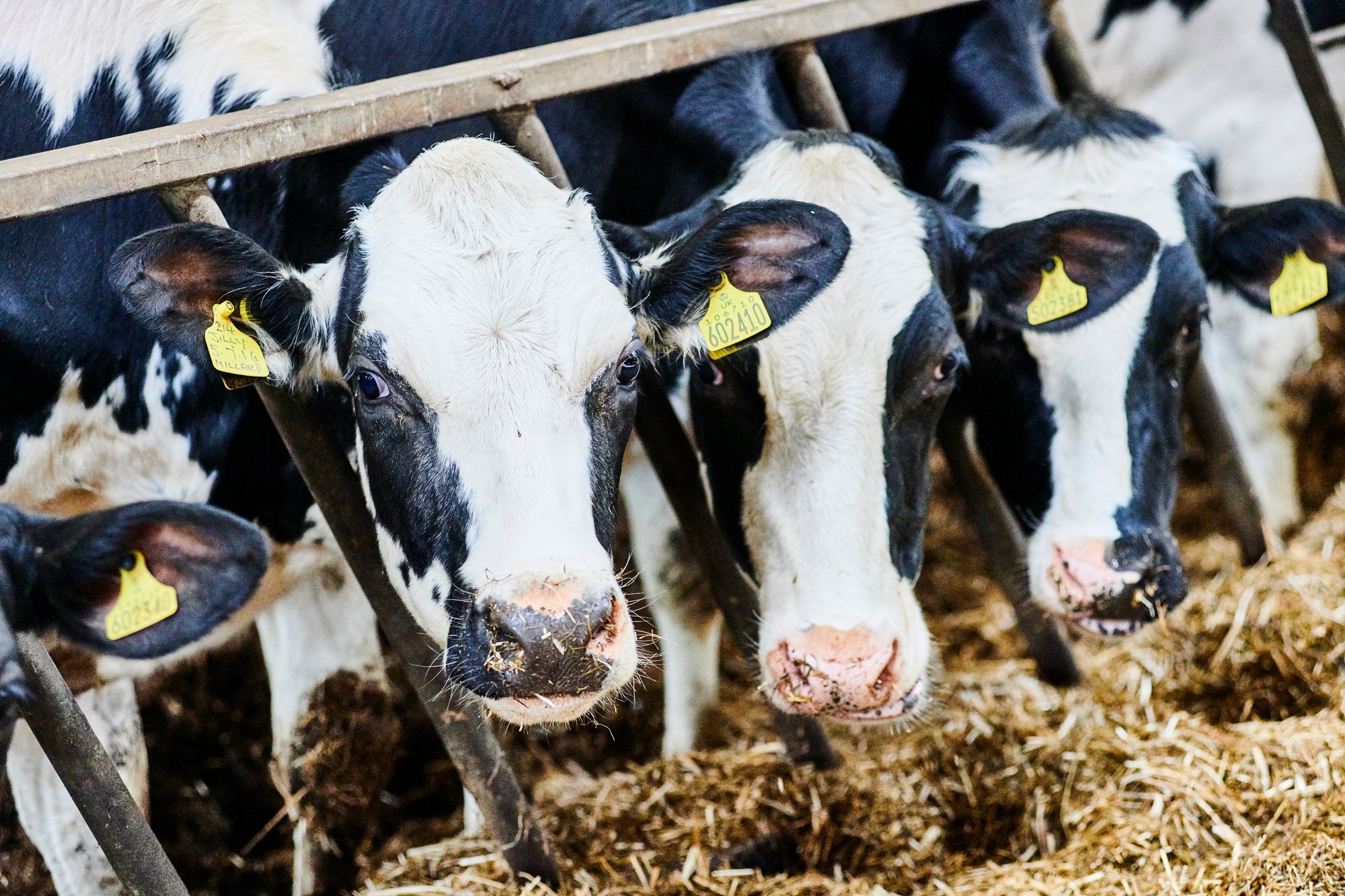
Measuring the methane emissions from cows is an important part of the fight against climate change. As pressure mounts to increase efforts and reach ambitious net zero targets, one sector facing a considerable challenge is the agriculture industry.
Sam Wilson, Professor of Biogeochemistry, and Hannah Davis, Lecturer in Ruminant Nutrition at Newcastle University, are leading research, funded by the National Innovation Centre for Rural Enterprise (NICRE), to develop non-invasive monitoring of methane emissions in dairy cows.
Contents:
The cow burp conundrum
UK agriculture is a major player in the drive to net zero. It contributes 10 per cent of Britain’s total greenhouse gas emissions with the dairy industry – currently made up of approximately 12,000 active premises – accounting for around half. This is due to methane produced mostly through – how do we say this politely – cow burps.
Belonging to a group of animals classified as ruminants, cows are herbivorous grazers that break down plant material by fermentation in a specialised stomach. It is this that leads to their exhaled air containing up to one per cent methane, a significant proportion when scaling up the breath emissions from an individual cow to a global scale. These emissions from ruminants make the agricultural sector one of the highest sources of methane into the atmosphere.
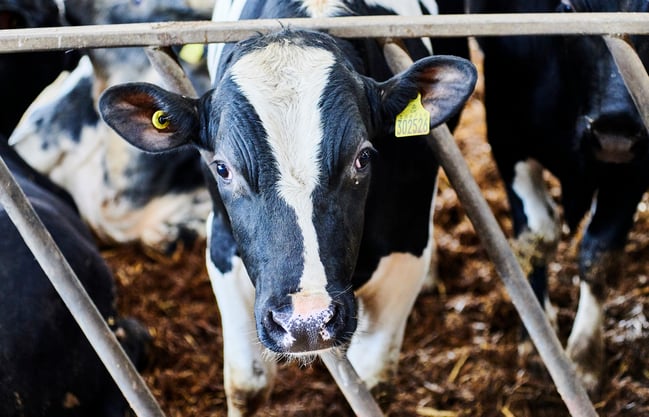
A piebald cow, akin to those being studied.
Cow-friendly carbon accounting
Our ‘Carbon accounting for the dairy industry’ research project is one of seven commissioned by NICRE, led by Newcastle University with partners, into the adapting rural economy. We have established an appropriate method for monitoring greenhouse gas emissions which achieves a balance between cost, ease of use, and practicality of the data, and are working with the UK dairy industry to demonstrate the feasibility of these low-cost measurements within the broader context of ruminant gases and cow physiology.
The overall aim of the research is to constrain the greenhouse gas emissions associated with dairy farms, with emphasis on ensuring the emission measurements have a high level of accuracy that can be used to validate any mitigation recommendations.
While the gaseous emissions of cows have been measured for decades, the unique aspect of our project is that we are conducting measurements on up to 50 cows at once, and the method is completely non-invasive and does not interfere with cows’ daily behaviour.
The sampling strategy
Measurements have been taking place at Newcastle University’s Nafferton Farm in Northumberland, which has 250 Holstein–Friesian dairy cows that are kept inside in winter and outdoors in spring/summer. The cows are milked twice per day, beginning at 6am and 3pm, and during the process, cows feed for typically five to six minutes from a trough (Figure 1).
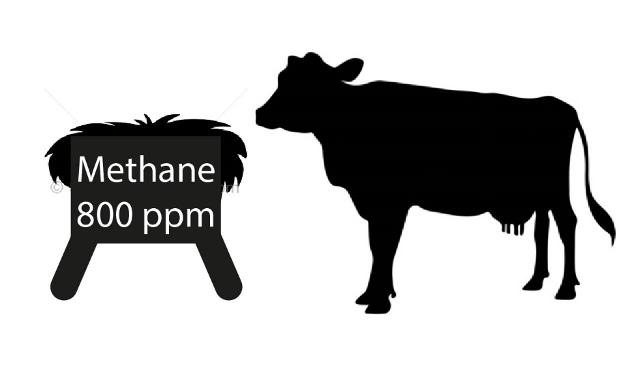 Figure 1. Methane concentrations are measured within the milking parlour to avoid any impact on cow physiology or behaviour. Methane values in feeding troughs are 400 times higher than the surrounding air with an average value of 800 parts per million (ppm) based on 1,300 measurements.
Figure 1. Methane concentrations are measured within the milking parlour to avoid any impact on cow physiology or behaviour. Methane values in feeding troughs are 400 times higher than the surrounding air with an average value of 800 parts per million (ppm) based on 1,300 measurements.
The sampling strategy involves breath analysis from the cows as this could be achieved with no interference in daily behaviour. Sampling is conducted during the afternoon milking via a tube extending from the trough through a wall, where it is pumped into gas-tight bags, which facilitate the four-and-a-half minute sampling period and the collection of 10 samples simultaneously. This procedure is repeated four to five times per milking session to enable 40-50 cows to be sampled during each occasion. The samples are analysed in our laboratories on the university campus.
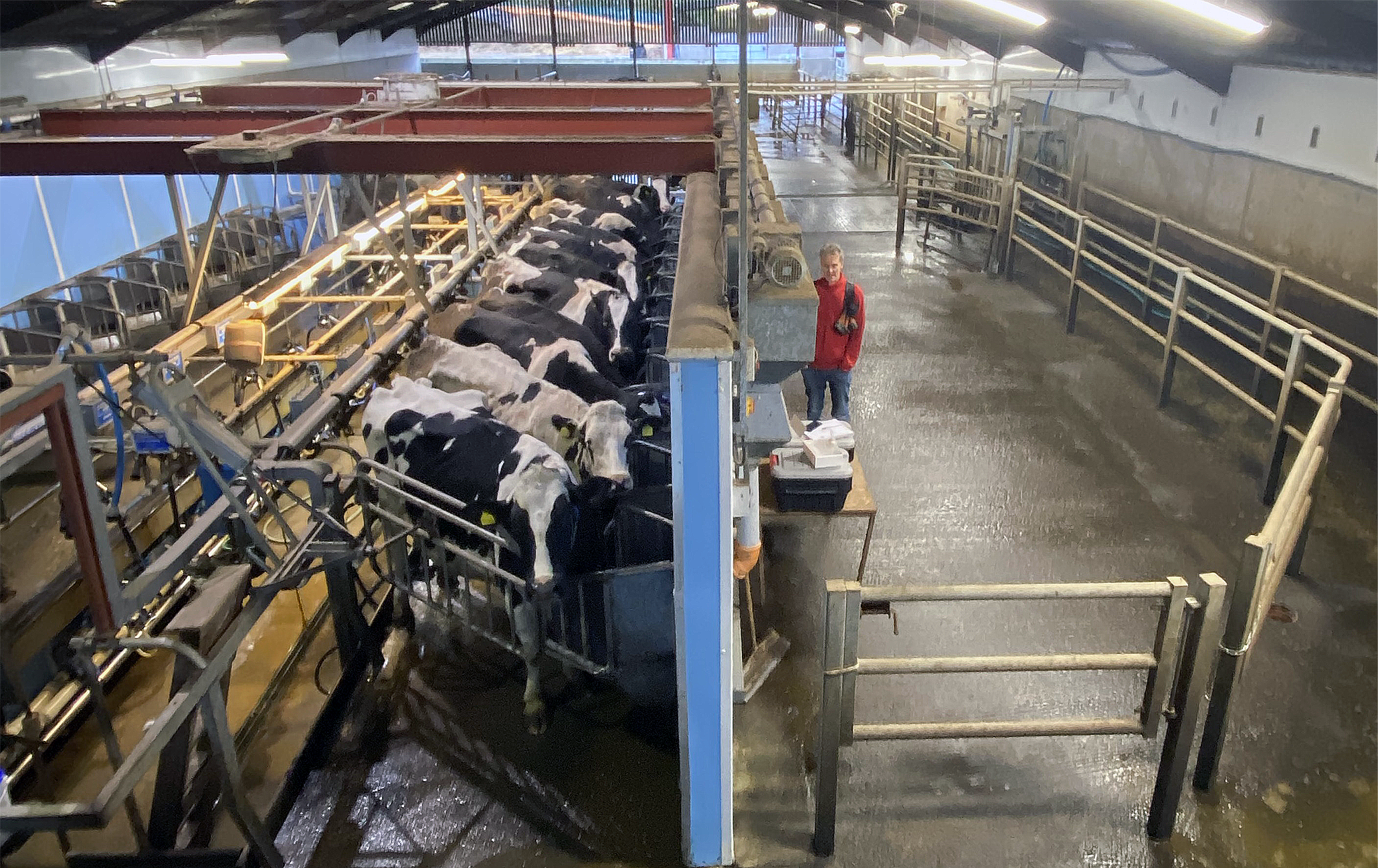
Cows at Nafferton Farm with Professor Sam Wilson conducting research.
Results and next steps
Since January 2023, more than 1,300 methane emission measurements have been conducted on 180 cows.
The results collected so far have been used to reveal the month-to-month variability across the dairy herd and how emissions differ with milk yield and the number of days producing milk (Figure 2). The emissions datasets are being correlated with the farm’s database to investigate relationships between methane emissions and cow physiology.
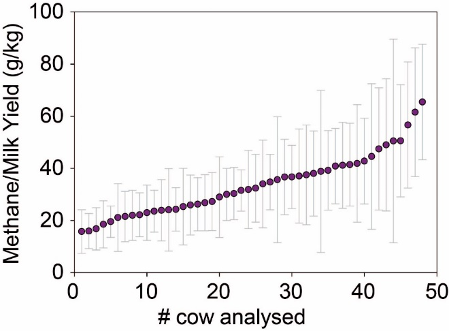
Figure 2. Measured methane concentrations are compared with the milk yield from each cow. The above plot shows these values for 50 cows within the dairy herd and the associated variability with these measurements. This analysis helps identify individuals within the herd that are producing low amounts of methane and we can then start considering the reasons why this might be occurring.
The method and datasets are being fully evaluated to provide best practice procedures that will allow repeat independent observations conducted throughout the UK to deliver comparable datasets. The project will lay the groundwork for the provision of validated greenhouse gas emission measurements and interpretation of the emission data so that it meets any prescribed regulations.
Overall, the project has brought together analytical chemists, agricultural scientists, dairy farmers and policy advisors around the shared aim of helping the industry transition to net zero. The data is being worked up so that it allows farmers to calculate methane production per milk solid and provides climate scientists with a more accurate picture of emissions. Given the earth’s rising temperatures, this is something that can’t come soon enough.
You might also like:
- Find out more about Sam Wilson, Professor of Biogeochemistry at Newcastle University.
- Find out more about Hannah Davis, Lecturer in Ruminant Nutrition at Newcastle University.
- Read about the other projects funded by NICRE into the adapting rural economy being undertaken by researchers at universities across England.
- Learn more about the ground-breaking research conducted by our School of Natural and Environmental Sciences.
- Learn more about the agriculture facilities available at Newcastle University.
